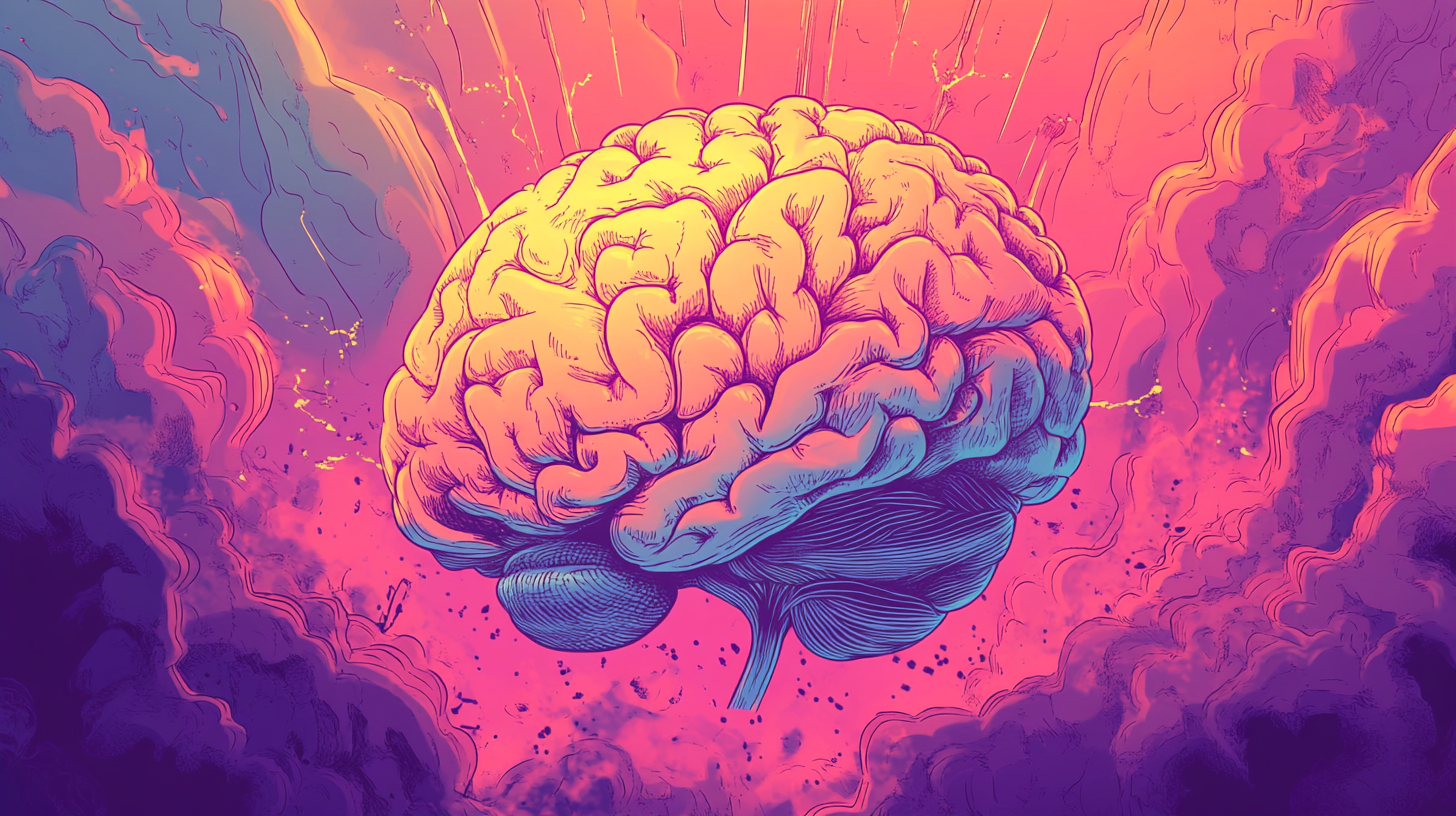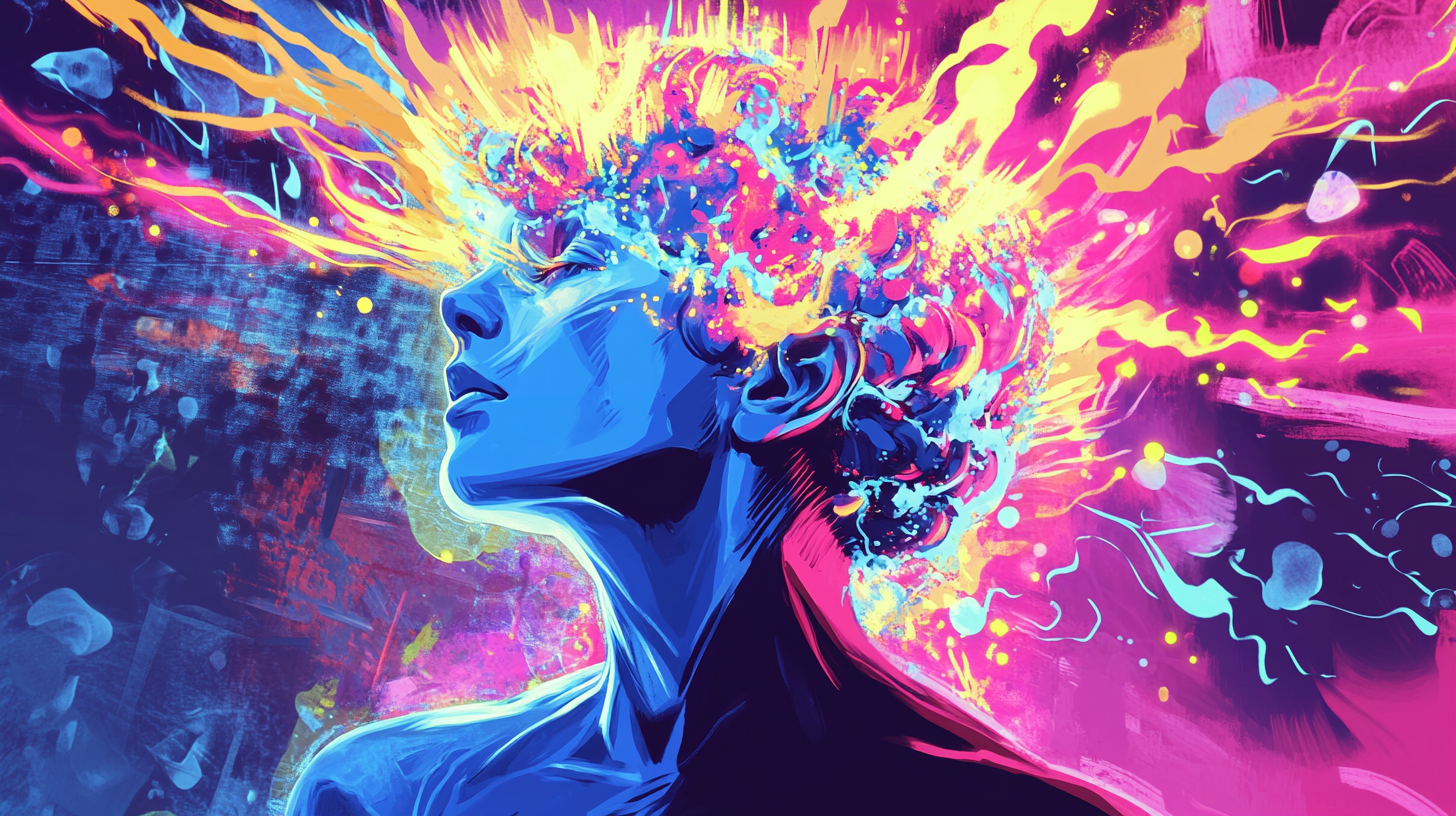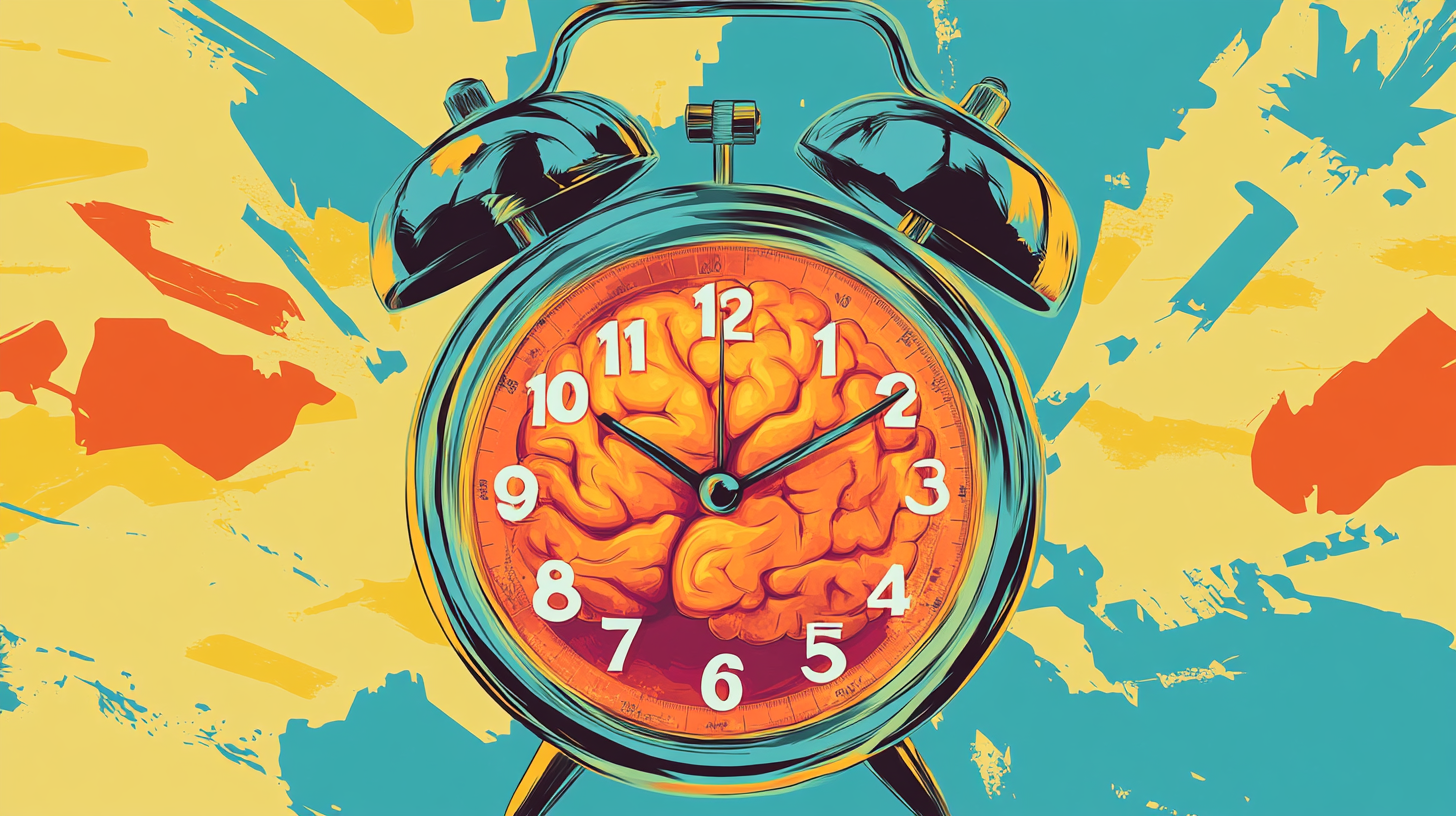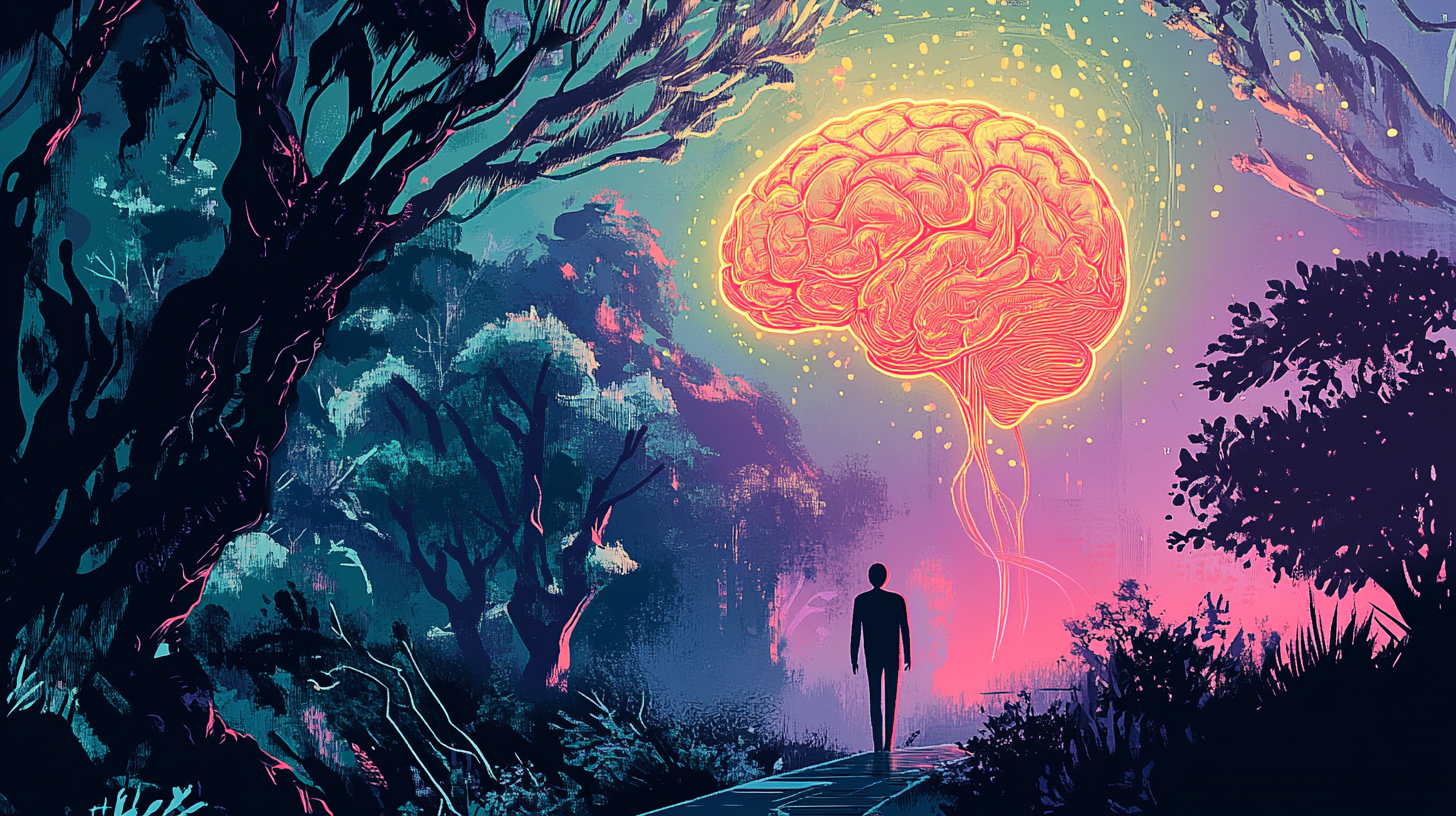The Science Behind Anxiety: How Your Brain and Body React 🧠
Anxiety doesn’t just cloud your thoughts — it reshapes your brain and body, wiring you for fear. Understanding what’s happening inside is the first step to finding a way out.

Anxiety has a way of sneaking up on you. One moment you’re answering emails or trying to find your keys, and the next, it feels like the room is shrinking. Your heart races. Your hands sweat. Your mind grabs onto worst-case scenarios like a dog with a chew toy.
We know what it feels like. But why does it happen? And why does it sometimes spiral beyond reason?
Understanding the science behind anxiety — the brain regions, the chemical messengers, the body’s hair-trigger reactions — doesn't make the feeling disappear. But it does make it less mysterious. And in a world where so much of anxiety feels like battling an invisible enemy, even a little clarity can be disarming.
Your Brain on High Alert: The Main Players🧍♂️

Three major regions of the brain shape your experience of anxiety. Each has a specific role — and each one, when dialed up too high or too low, can send your mind into overdrive.
The Amygdala:
Often called the brain’s alarm system, the amygdala is a small, almond-shaped cluster buried deep in the brain’s temporal lobe. When you perceive a threat — real or imagined — the amygdala springs into action almost instantly, sending urgent signals to the rest of your brain and body. (Harvard Health)
The Prefrontal Cortex:
This is your brain’s logic center. It helps you assess risk, plan, and make decisions. In theory, it should keep the amygdala in check — stepping in to say, "Hey, it's just a presentation, not a bear attack." But under chronic anxiety, the prefrontal cortex can become less effective at regulating fear responses.
The Hippocampus:
The hippocampus processes memories and gives context to fear. It helps you remember that this alley feels unsafe because you had a bad experience there once. When anxiety is persistent, the hippocampus can shrink in volume, making it harder to distinguish between real and exaggerated threats. (American Psychological Association)
Chemical Messengers: Cortisol, Serotonin, and Norepinephrine 📥

When anxiety strikes, your brain doesn't just light up — it floods itself with chemical messengers.
Cortisol:
Often called the "stress hormone," cortisol gets released by the adrenal glands in response to fear. In small doses, it’s useful — heightening your senses, giving you a burst of energy. But chronic cortisol exposure can damage neurons, impair memory, and weaken the immune system. (Mayo Clinic)
Serotonin:
Low serotonin levels are linked to mood disorders, including anxiety and depression. Serotonin acts as a mood stabilizer, promoting feelings of well-being and security. A dysregulated serotonin system makes it harder to "turn off" the anxiety response once it starts.
Norepinephrine:
Think of norepinephrine as your brain’s gas pedal during a threat. It increases heart rate, sharpens attention, and primes the body for action. But too much can make you jittery, hypervigilant, and exhausted — classic hallmarks of anxiety.
Fight-or-Flight: Your Ancient Alarm System ⏰

At the core of anxiety is the fight-or-flight response — an evolutionary relic designed to save your life when real danger strikes.
When the amygdala detects a threat, it sends a distress signal to the hypothalamus, triggering the autonomic nervous system. In a split second:
- Heart rate accelerates to pump more blood to muscles.
- Breathing speeds up to flood the body with oxygen.
- Blood sugar spikes for instant energy.
- Digestion slows down — because fleeing is more important than digesting lunch.
In the Stone Age, this response helped you outrun predators. In the office, it gets set off by emails and meetings — and there’s nowhere for all that adrenaline to go. (Cleveland Clinic)
Chronic Anxiety: When the Brain Starts to Change 🔄

One of the more sobering truths about anxiety is that the longer it persists, the more it reshapes the brain.
This is where neuroplasticity — the brain’s ability to rewire itself — comes into play. When anxiety is frequent, the amygdala grows more sensitive, firing alarms more often and with less provocation. Meanwhile, the prefrontal cortex can weaken, making it harder to reason through fear.
It becomes a feedback loop:
- Anxiety begets more anxiety.
- Fear circuits strengthen, while calming circuits weaken.
- Over time, even neutral situations can provoke a threat response.
(National Institute of Mental Health)
The Body’s Toll: How Anxiety Physically Shows Up 🥶

Anxiety doesn’t just stay in the brain. It spills into the body in ways that can feel all-consuming.
- Heart Rate: You might feel heart palpitations or a racing heartbeat, often mistaken for cardiac issues.
- Breathing: Shortness of breath, hyperventilation, and the feeling of "can't catch my breath" are common.
- Gastrointestinal Distress: The gut is sometimes called the "second brain," and anxiety can trigger nausea, cramping, diarrhea, and even IBS symptoms. (Johns Hopkins Medicine)
It’s a full-body experience — and because the symptoms themselves can be frightening, they often reinforce the anxiety loop.
Can You Rewire an Anxious Brain? 🔌

The good news is that neuroplasticity cuts both ways. Just as chronic anxiety can strengthen fear circuits, intentional practices can strengthen calm circuits.
Cognitive Behavioral Therapy (CBT): CBT teaches you to recognize anxious thoughts and reframe them — breaking the automatic chain between fear and panic. Research shows CBT can physically alter brain activity, reducing amygdala hyperactivity. (Beck Institute)
Mindfulness and Meditation: Practices like mindfulness meditation help build new neural pathways that support present-moment awareness, emotional regulation, and reduced reactivity to stress.
Exposure Therapy: Gradual exposure to feared situations can retrain the brain to recognize them as non-threatening, shrinking the amygdala’s overblown response.
Other types of therapy: There are lots of talking therapies that can help you manage, understand, and build tools to help you find a better way of living with anxiety.
In essence: yes, you can "rewire" an anxious brain. But like any form of training, it takes time, consistency, and often, support.
Summary: Anxiety Isn’t All in Your Head — But It’s Not All Destiny, Either 🔮

Anxiety is a full-body experience rooted in real, measurable changes in the brain and body. It’s not weakness. It’s not imaginary. It's biology — a system designed for survival that sometimes misfires in a world it wasn’t built for.
But brains are built to change. And understanding the science behind anxiety is the first step in loosening its grip.
Want more? 🙋
I'm building a course to help you manage your own anxiety. If that's something that interests you? Sign up below. Exploring anxiety doesn't have to be a solo journey. 👇

